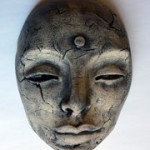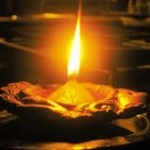 My friend and local sculpture, Lauren Trimble, paired with the budding yoga and community space [ahimsa] in Mile End for an evening of Art & Music: Artic! this Friday night in celebration of earth day. I was graciously invited to sell and sample some of Sustainable Healing’s herbal delights. Thanks folks! We all envision this to be a celebratory and mindful event, in line with the ethics of Lauren, [ahimsa] and Sustainable Healing. With the idea of taking things a bit further I wanted to ask Lauren about art and it’s relationship with sustainability in our culture. What is the value of art in a world with so much stuff already? With over-consumerism finally becoming not-so-cool? How do we rationalize buying art or making art in modern day-eco-conscious-no-plastics-leave-no-trace-isms?
My friend and local sculpture, Lauren Trimble, paired with the budding yoga and community space [ahimsa] in Mile End for an evening of Art & Music: Artic! this Friday night in celebration of earth day. I was graciously invited to sell and sample some of Sustainable Healing’s herbal delights. Thanks folks! We all envision this to be a celebratory and mindful event, in line with the ethics of Lauren, [ahimsa] and Sustainable Healing. With the idea of taking things a bit further I wanted to ask Lauren about art and it’s relationship with sustainability in our culture. What is the value of art in a world with so much stuff already? With over-consumerism finally becoming not-so-cool? How do we rationalize buying art or making art in modern day-eco-conscious-no-plastics-leave-no-trace-isms?
Earth Day has become quite the marketing tool in the past ten years, now with multiple websites luring you to events all over the globe. So I think it’s nice to get back to our roots so to speak and at least try and contemplate some important and new ideas of why we are celebrating earth day in the first place. So this one is a bit longer than usual, but give it a chance, there’s much food for thought!
Some brain food from Lauren:
What was the inspiration for combining your vernissage with music and an earth day theme?
“The event really evolved by circumstance. It was Miranda’s idea of the art and music combination for March, that soon had to be April seeing as we needed to find musicians and had no one in mind. The fact that Earth Day was also my birthday, a Friday night and in April we just went with it. Seeing as [ahimsa] is based on sustainability and non-violence and has gone through some amazing transformations such as the medicine wheel ceremony to create sacred space, it is very, very cool that it is now hosting an Earth Day event. We will be posting the Earth Charter for everyone to read, and have a place where people can make some conscious affirmations for the Earth. And the Buddha and torso sculptures I make also fit well with yoga, ahimsa and Earth Day. The Balkan music to be honest, is for the sheer joy of that kind of music.”
What’s the deeper relationship for you between art and sustainability in our culture? (besides the obviousness that you work with clay and it’s durable earthy-ness!)
“I love saying that clay is, in essence, dirt and that it is one of the oldest materials used to make objects for ceremony, beauty and art. However, beyond that, I feel that art is the place where we put ideas, dreams, thoughts and criticisms.
Art is a creative act directed by mind and heart (the creative element), and according to some, including myself, by external muses and spirits (someone else’s or something else’s heart or spirit).
Art is also the main basis for how we define culture. It is the expression of a culture as much as language is the matrix. Even if art as a critique tries to tear apart culture, or change it or even mock it. Looking at our own culture, it is easy to see that designed art for marketing intention has taken over our visual landscape and therefore takes on the dominant role of art that we experience.
Is this sustainable over the long term, will people continue to allow their visual senses to absorb up to 5000 advertisements/designs a day in large, urban environments?
It is not hard to understand how input in leads to input out when considering that the brain, in my opinion, functions as a computer. It does not actually create but merely organizes and stores information for use when it is needed. So the dreams and ideas we reflect back into our culture when our hearts are not engaged and when we are not inspired by love, are ones of a marketing stratagem, whatever that implies in our Post-postmodern era!
When I look at most contemporary installation art, the emphasis is on the idea or concept and the medium is only a carrier of that intention. Art is capable of transmitting itself through endless mediums, even those we are trying to reduce or avoid such as plastics, so if the materials are only temporary, and the art itself is only temporary, this is often overlooked as long as the desired effect is performed. The artist then creates a moment in time to be absorbed and felt and that unless it is documented by photography or video, will not last. It is then thrown away because the construction is usually such that it is not in fact meant to last or it is stored in some unfrequented place to make room for the next installation. What does this say about the sustainability of the idea, of the lasting impact of the dream? How can a culture grow and flourish when its roots are never planted and kept in view to grow with the light? Is it any wonder we all have the sense of constantly starting over or even of making it up as we go along?
I feel the more we leave art to become a mechanistic production of advertisements and the less we support and invest in art created by the heart and created with the intention to last over time, we are in turn making our culture less nourishing and possibly even toxic. We are forgetting something important about how our collective dreams and ideas can thrive and be sustainable in the long term and continue to grow and evolve for the coming generations.”
mmmm. good food for thought. How does art weave sustainably or not into your life?
Join us for more juicy conversation & awesome Balkan Gypsy music!
Friday at 8:30pm at [ahimsa]
